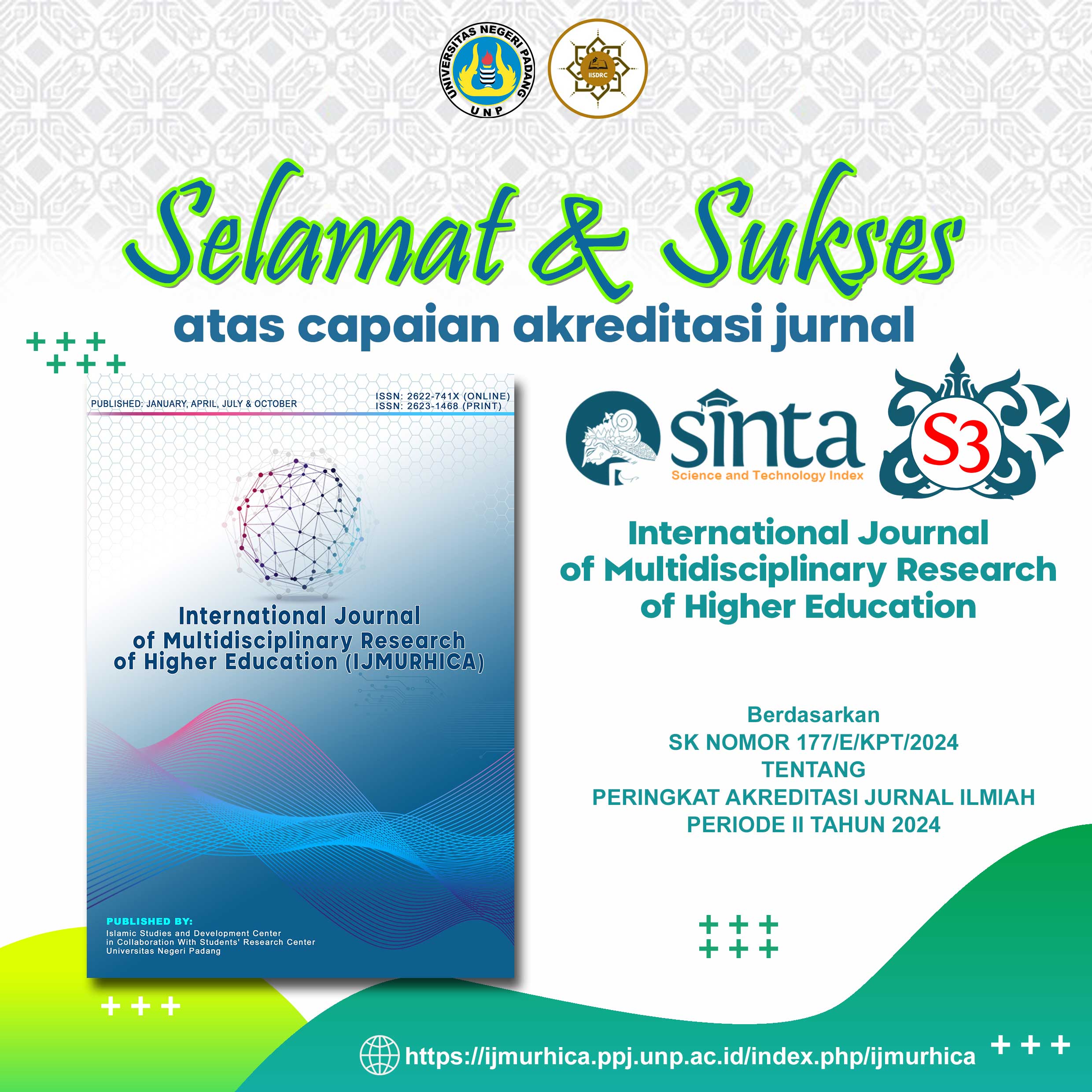Five Motivations to Take Islamic Studies in Higher Education
DOI:
https://doi.org/10.24036/ijmurhica.v3i3.185Keywords:
Motivation, student, Islamic studies, collegeAbstract
Islamic studies in universities are places for self-development in Islamic way towards Islamic morality. However, not all students are interested in participating this activity if it is not driven by strong desire and personal motivation. This study aims to analyze what motivates students to participate in Islamic studies in university. Therefore, this research is conducted by qualitative method with a case study approach. The data were collected from fifteen informants through in-depth interviews which selected by using purposive sampling technique, all informants are students who are members of Islamic studies in universities. Afterwards, the interview’s result be analyzed thematically. Overall, the results of the analysis show that there are five student’s major motivations to take part in Islamic studies in university. The five motivations are; i) self-desire, ii) desire to deepen Islamic knowledge, iii) expanding relations, iv) desire to always be around religious people, and v) to hone organizational skill. This study result can be used as initial data for future researchers in addressing this issue in different context and issues.






